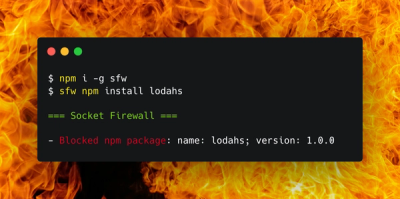
Security News
PodRocket Podcast: Inside the Recent npm Supply Chain Attacks
Socket CEO Feross Aboukhadijeh discusses the recent npm supply chain attacks on PodRocket, covering novel attack vectors and how developers can protect themselves.
@xmtp/content-type-reaction
Advanced tools

This package provides an XMTP content type to support reactions to messages.
Open for feedback
You are welcome to provide feedback on this implementation by commenting on the Proposal for emoji reactions content type.
A reaction is a quick and often emoji-based way to respond to a message. Reactions are usually limited to a predefined set of emojis or symbols provided by the messaging app.
Providing message reactions in your app enables users to easily express a general sentiment or emotion toward a message. It also provides a handy way to acknowledge a message or show a particular emotional reaction without engaging in a detailed response.
# npm
npm i @xmtp/content-type-reaction
# yarn
yarn add @xmtp/content-type-reaction
# pnpm
pnpm i @xmtp/content-type-reaction
With XMTP, reactions are represented as objects with the following keys:
reference: The message ID for the message that is being reacted toaction: The action of the reaction (added or removed)content: A string representation of a reaction (e.g. smile) to be interpreted by clientsconst reaction: Reaction = {
reference: someMessageID,
action: "added",
content: "smile",
};
Now that you have a reaction, you can send it:
await conversation.messages.send(reaction, {
contentType: ContentTypeReaction,
});
Note
contentFallbacktext is provided by the codec and gives clients that don't support a content type the option to display some useful context. For cases where clients do support the content type, they can use the content fallback as alt text for accessibility purposes.
Now that you can send a reaction, you need a way to receive a reaction. For example:
// Assume `loadLastMessage` is a thing you have
const message: DecodedMessage = await loadLastMessage();
if (!message.contentType.sameAs(ContentTypeReaction)) {
// We do not have a reaction. A topic for another blog post.
return;
}
// We've got a reaction.
const reaction: Reaction = message.content;
Generally, reactions should be interpreted as emoji. So, smile would translate to :smile: in UI clients. That being said, how you ultimately choose to render a reaction in your app is up to you.
Run yarn dev to build the content type and watch for changes, which will trigger a rebuild.
Before running unit tests, start the required Docker container at the root of this repository. For more info, see Running tests.
yarn build: Builds the content typeyarn clean: Removes node_modules, dist, and .turbo foldersyarn dev: Builds the content type and watches for changes, which will trigger a rebuildyarn lint: Runs ESLintyarn test:setup: Starts a necessary docker container for testingyarn test:teardown: Stops docker container for testingyarn test: Runs all unit testsyarn typecheck: Runs tscFAQs
An XMTP content type to support reactions to messages
We found that @xmtp/content-type-reaction demonstrated a healthy version release cadence and project activity because the last version was released less than a year ago. It has 6 open source maintainers collaborating on the project.
Did you know?

Socket for GitHub automatically highlights issues in each pull request and monitors the health of all your open source dependencies. Discover the contents of your packages and block harmful activity before you install or update your dependencies.

Security News
Socket CEO Feross Aboukhadijeh discusses the recent npm supply chain attacks on PodRocket, covering novel attack vectors and how developers can protect themselves.

Security News
Maintainers back GitHub’s npm security overhaul but raise concerns about CI/CD workflows, enterprise support, and token management.

Product
Socket Firewall is a free tool that blocks malicious packages at install time, giving developers proactive protection against rising supply chain attacks.